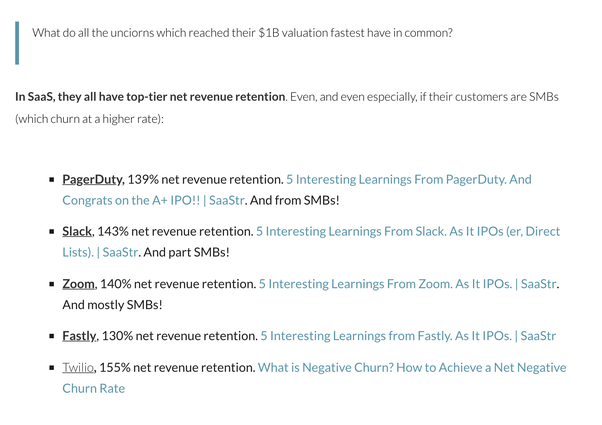- Like
- SHARE
- Digg
- Del
- Tumblr
- VKontakte
- Flattr
- Buffer
- Love This
- Save
- Odnoklassniki
- Meneame
- Blogger
- Amazon
- Yahoo Mail
- Gmail
- AOL
- Newsvine
- HackerNews
- Evernote
- MySpace
- Mail.ru
- Viadeo
- Line
- Comments
- Yummly
- SMS
- Viber
- Telegram
- JOIN
- Skype
- Facebook Messenger
- Kakao
- LiveJournal
- Yammer
- Edgar
- Fintel
- Mix
- Instapaper
- Copy Link
Q: What is customer lifetime value, and why is it important?
It might not be that important. CLTV is critical (of course), but it has become less useful as a planning tool over time in SaaS.
In the early days of SaaS, we all focused on Customer Lifetime Value. In B2C and high-churn environments, it’s indeed a critical metric. You do need to know how long your customers last.
But in SaaS, in the earlier days, we inherited a lot of our lingo and metrics from B2C web services. They were early to mass-scale recurring revenue services on the web than B2B was. So we used their core metrics like “Churn” and “Lifetime value”. These terms do matter in B2B SaaS, too. But they need to be repurposed, because our B2C friends assume a lot higher churn and turnover, and much lower revenue per customer, than most B2B applications.
We’ve moved on in SaaS from CLTV as being a core north star metric. We’ve learned:
- Net revenue retention probably matters more. How much revenue your existing customer base grows each year. If it’s more than 120%, your customer lifetime value in essence is infinity (for now). And we’ve learned if you do have net negative churn, you can maintain that for decades. Twilio still has 140% net revenue retention at $2b+ in ARR. Still.
- Long CLTVs can over/mis-justify excessive marketing spend. Just because a customer lasts a decade doesn’t necessarily mean you should spend the first 24 months of revenue acquiring that customer. It might justify it. But maybe not.
- The calculation is complex when net churn is close to zero or negative. If you are in a high-churn environment, calculating lifetime value is easy. E.g, net churn of 2%-3% a month. It’s critical to know then so you don’t have a “leaky bucket”.
So CLTV does matter. It’s just, once CLTV starts to exceed 3 years or so, it becomes less important as a core metric for planning than the raw cost to acquire that customer.
The Fastest Growing Unicorns Have This In Common
Published on June 11, 2020



